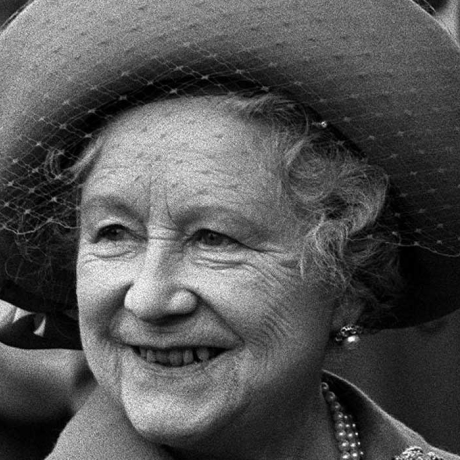Her Majesty Queen Elizabeth The Queen Mother was the mother of Queen Elizabeth II, the former British sovereign, and the widow of King George VI.
She was born the Honourable Elizabeth Angela Marguerite Bowes-Lyon on 4 August 1900 (fourth daughter of Lord Glamis, later 14th Earl of Strathmore and Kinghorne, and second child). She spent her early childhood at St Paul's Waldenbury in Hertfordshire, north of the capital. This was the country home of her parents. When her father inherited his Earldom in 1904, she became Lady Elizabeth Bowes-Lyon.
The Bowes-Lyon family is descended from the Royal House of Scotland. One of The Queen Mother's 14th-century ancestors, Sir John Lyon, became Thane of Glamis, home of Macbeth 300 years before, and Glamis Castle is the family seat.
Childhood
Lady Elizabeth was educated at home By the age of 10, she was fluent in French. When the First World War started - coincidentally on her 14th birthday - Glamis Castle became a hospital. Although Lady Elizabeth was too young to work as a nurse, she did assist with welfare work with the patients. One of her brothers, Fergus, was killed at the Battle of Loos in 1915.
Marriage and family
From childhood days Lady Elizabeth and her older sisters had been friendly with the children of King George V and Queen Mary.
Occasionally, members of the Royal Family stayed at Glamis Castle. In 1922 Lady Elizabeth acted as one of the bridesmaids at the wedding of their daughter, Princess Mary.
In January 1923 came the announcement of her engagement to HRH The Duke of York (Prince Albert Frederick Arthur George), The King and Queen's second son. They were married on 26 April 1923 in Westminster Abbey.
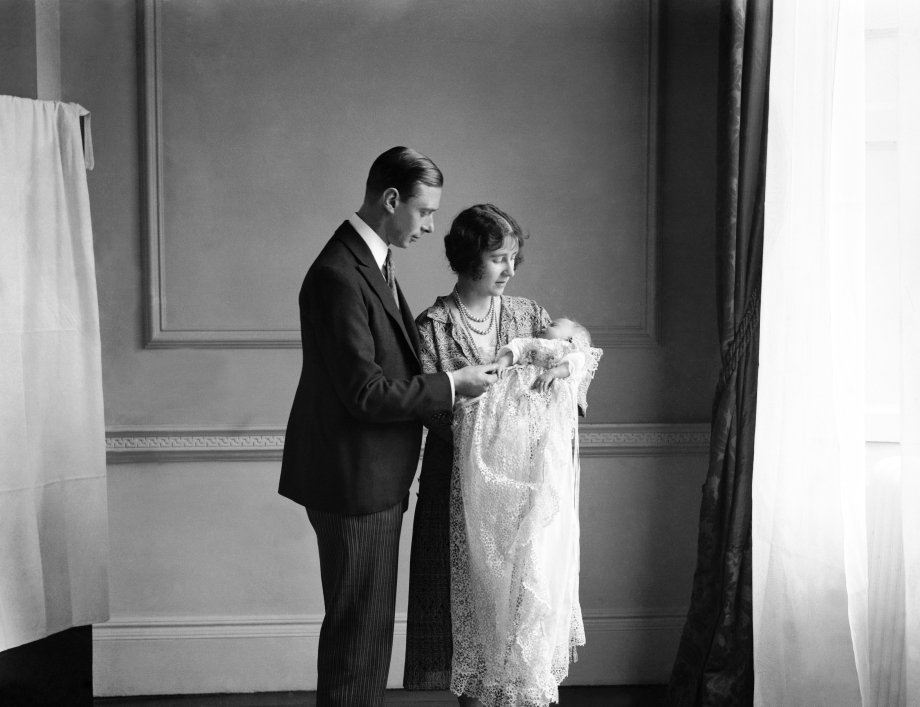
They had two children, Princess Elizabeth, born on 21 April 1926 at the Strathmores' London home, 17 Bruton Street, and Princess Margaret, born on 21 August 1930 at Glamis Castle. Princess Margaret predeceased her mother, dying on 9 February 2002.
Accession
King George V died in January 1936. When King Edward VIII abdicated on 11 December the same year, his brother, Albert, Duke of York, was proclaimed King George VI, and his Duchess became Queen Elizabeth, the first British-born Queen Consort since Tudor times.

Activities as Queen
The King and Queen continued to visit other Commonwealth nations and overseas countries. Between the coronation and the outbreak of war in September 1939 they made two important visits: in July 1938 to France, and May and June 1939 to Canada and the USA.
With the outbreak of war in 1939, there was some suggestion that the Queen and her daughters should evacuate to North America or Canada. To this the Queen made her famous reply: 'The children won't go without me. I won't leave the King. And the King will never leave.' Thus throughout the Second World War the Queen and her children shared the dangers and difficulties of the rest of the nation. She was in Buckingham Palace when it was bombed in September 1940. She and the King visited badly damaged areas throughout the country after the air-raids, and toured Britain visiting hospitals, factories and troops.
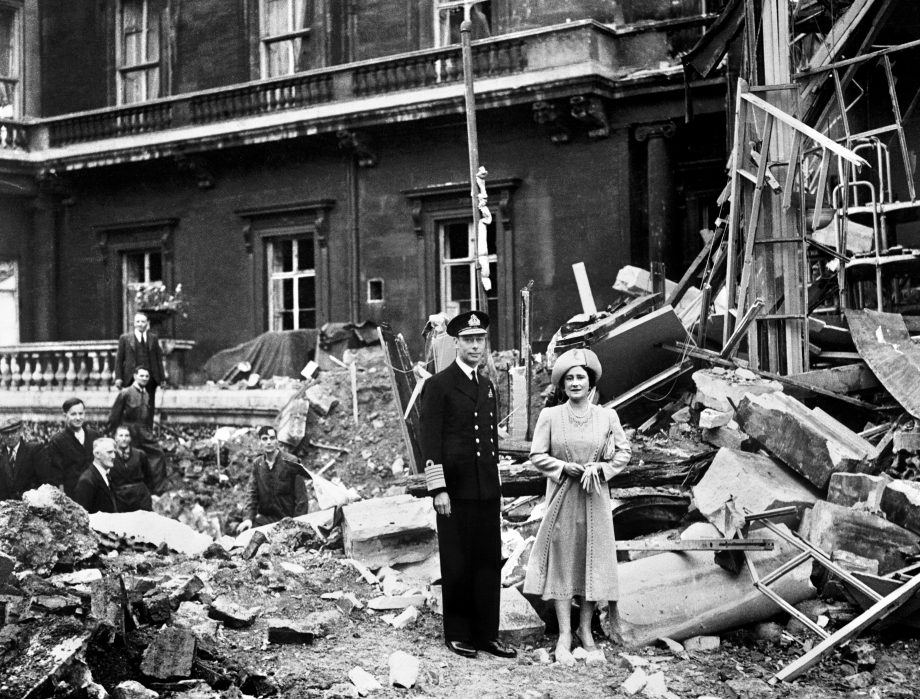
After the war, in 1947, they went on an extensive tour of South Africa.
In 1948 the King and Queen celebrated their Silver Wedding. Broadcasting to the nation, the King spoke movingly of the inspiration that he had received from his marriage. Sadly, his health prevented him carrying out further Commonwealth tours. The last major public occasion that he and the Queen attended together was the opening of the Festival of Britain in May 1951.
In autumn 1951, Princess Elizabeth and The Duke of Edinburgh took their places on a tour of Canada, and did so again the following January on a postponed visit to Australia and New Zealand. It was at the beginning of this trip that the King died peacefully, on 6 February 1952, at Sandringham House in Norfolk.
Royal tours
Her first public appearance after her wedding was on 30 June 1923, at the RAF pageant at Hendon. After that, the Duchess made many overseas journeys with the Duke. Six months after their wedding they went to Belgrade, where they both stood sponsor at the christening of the future King Peter II of Yugoslavia. Later they travelled to Kenya, Uganda and the Sudan, and in 1927 they spent six months on a world tour, during which the Duke opened the Federal Parliament of Australia in Canberra, the new capital.
Public duties
After the King's death, The Queen Mother continued her public duties in the UK and overseas. These included over 40 official visits abroad, including a 1989 visit to Canada which marked the 50th anniversary of her first visit there.
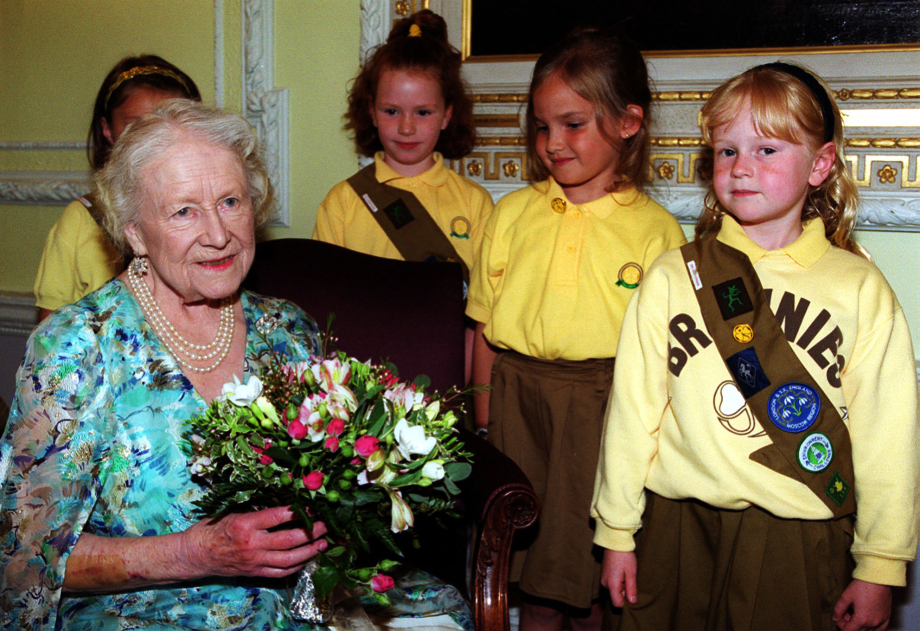
Her Majesty was Patron or President of some 350 organisations. She was Commandant-in-Chief of the Army and Air Force Women's Services, and for Women in the Royal Navy, and held other Service appointments. For many years she was President of the British Red Cross Society, and she was Commandant-in-Chief of the Nursing Division of the St John Ambulance Brigade. She was also Colonel-in-Chief or Honorary Colonel of many UK and overseas regiments, and Commandant-in-Chief of the Royal Air Force Central Flying School.
View footage of Queen Elizabeth The Queen Mother's visit to Heinz in 1959:
Leisure activities
In 1952 Queen Elizabeth moved out of Buckingham Palace to Clarence House in St James's Palace. In 1953 she bought the Castle of Mey, in the extreme north-east of Scotland, and spent time there each year in August and October.
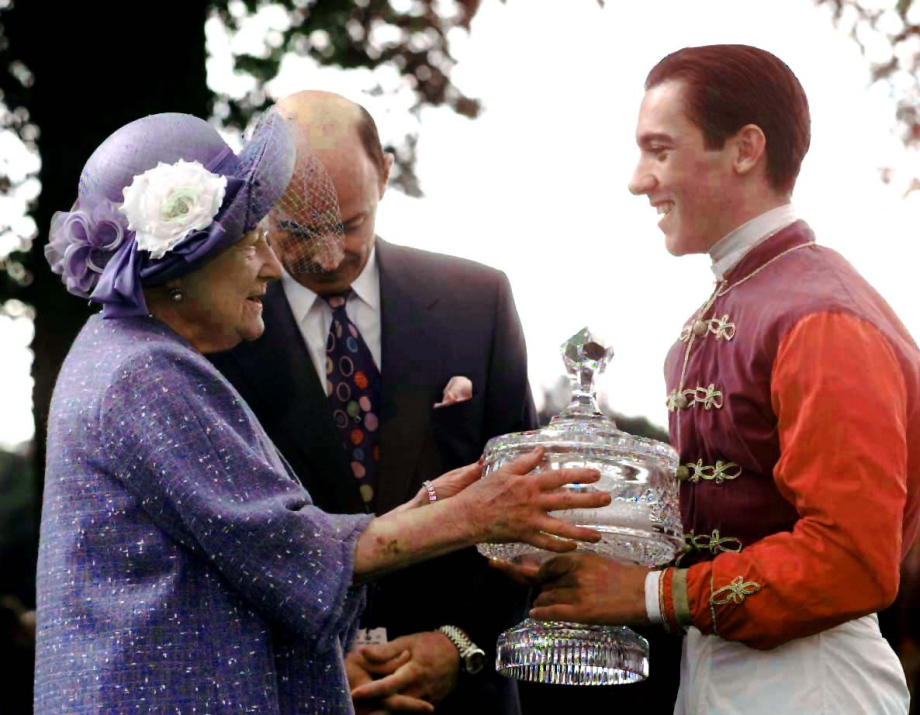
The Queen Mother also always found time to pursue her love of the countryside and sport; she was a keen and expert fisherwoman and enjoyed horse racing, being a leading owner of steeplechasers.
Arms and standards
In heraldic terms, the Arms of The Queen Mother are described:
The Arms of the United Kingdom of Great Britain and Northern Ireland impaling quarterly first and fourth (for LYON) argent, a lion rampant azure, armed and langued gules, within a double tressure flory counter-flory of the second; second and third (for BOWES) Ermine, three Bows, strings palewise proper.
Her Arms, without any supporters, crowns or garters, were used as her Standard.
Honours
The Queen Mother was appointed a Lady of the Garter on 14 December 1936. At the time of the coronation - highly appropriate for a Queen of Scottish birth - the King also appointed her the first Lady of the Thistle ever created. The Queen Mother also received a number of orders, decorations and medals, both in this country and from overseas.

